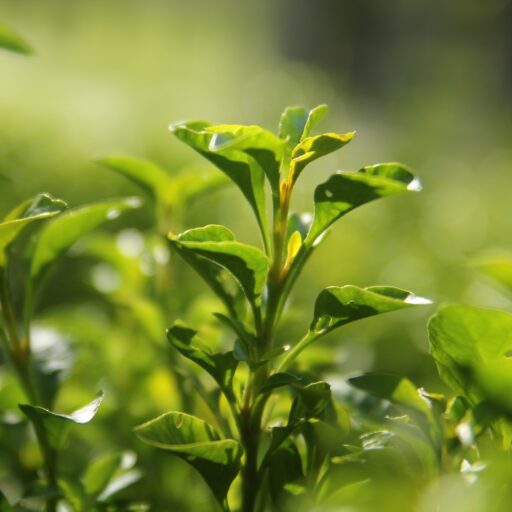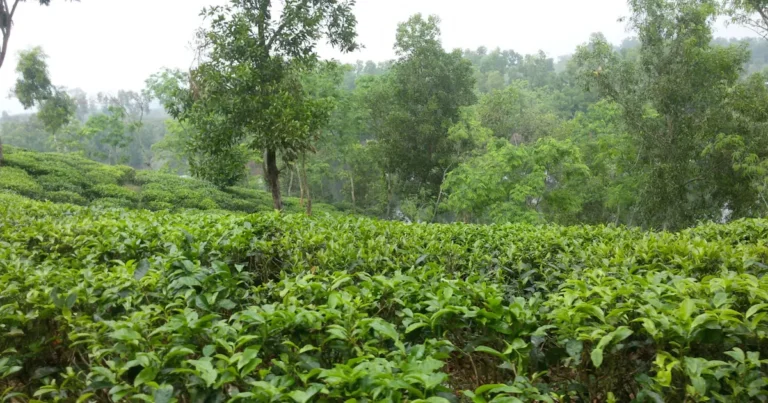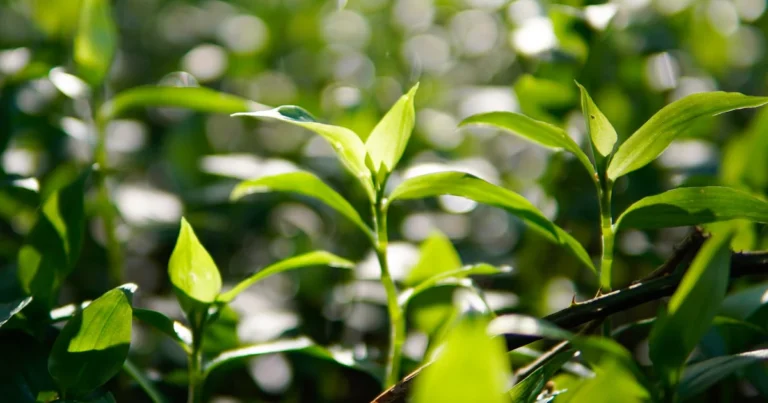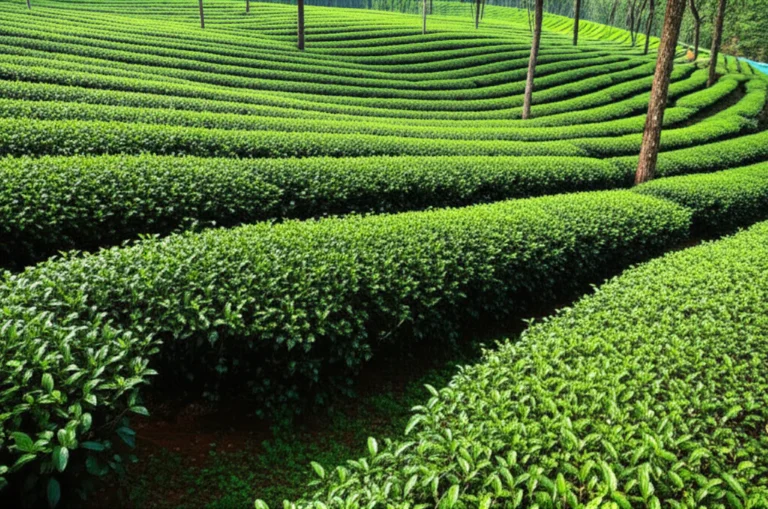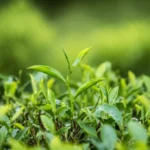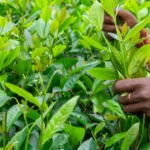Support our educational content for free when you purchase through links on our site. Learn more
What Are the 7 Best Climate Conditions for Growing Tea Plants? 🍃 (2025)
Imagine sipping a cup of tea brewed from leaves nurtured in the perfect climate—where temperature, rainfall, humidity, and altitude harmonize to coax out the richest flavors and aromas. At Growing Teas™, we’ve spent years uncovering the secrets behind these ideal conditions, and trust us, it’s not just about planting a bush and hoping for the best. Did you know that tea plants thrive best in a narrow temperature band between 15°C and 23°C, and that even slight shifts in humidity or soil acidity can make or break your harvest? Stick with us as we reveal the 7 essential climate factors that every aspiring tea grower needs to master, plus the common pitfalls to avoid. Whether you’re dreaming of a sprawling plantation or a cozy backyard pot, this guide will brew up your success.
Curious about how altitude can transform the flavor of your tea or why frost is the plant’s worst enemy? We’ll dive deep into those mysteries and more, sharing insider tips from our own tea gardens and the latest research on climate change’s impact on tea cultivation. Ready to grow your perfect cup? Let’s get started!
Key Takeaways
- Optimal temperature for tea plants is 15–23°C (59–73°F), avoiding frost and extreme heat.
- Tea requires abundant, well-distributed rainfall (~1,500 mm annually) and well-drained soil to prevent root rot.
- High humidity (~85%) and at least five hours of sunlight daily promote tender, flavorful leaves.
- Altitude influences growth speed and flavor complexity—higher elevations yield more aromatic teas.
- Wind protection and soil acidity (pH 4.5–6.0) are critical for healthy plants and quality harvests.
- Climate change poses new challenges, but innovative farming practices can help sustain tea cultivation.
- Avoid common mistakes like planting in frost-prone areas or neglecting soil drainage and humidity needs.
Ready to cultivate your own tea paradise? Keep reading for detailed insights and expert advice from Growing Teas™!
Table of Contents
- ⚡️ Quick Tips and Facts
- 🌿 The Root of the Matter: A Brief History of Tea Cultivation Climates
- 🌍 Where in the World? Ideal Geographic Zones for Tea Plant Prosperity
- 🌡️ The Goldilocks Zone: Optimal Temperature Ranges for Tea Plants
- 💧 Raining Riches: Essential Rainfall and Water Management for Tea
- 🌫️ The Misty Magic: Humidity’s Role in Flavor and Growth
- ☀️ Sunshine Secrets: Light Intensity and Duration for Lush Leaves
- ⛰️ Altitude Advantage: How Elevation Shapes Tea Character
- 🌬️ Wind Whispers: Air Movement and Its Impact on Tea Gardens
- 🌱 Soil’s Soulmate: The Unsung Hero of Tea Plant Health
- 🌪️ Climate Change Conundrums: Adapting Tea Cultivation for the Future
- ✅ 7 Essential Climate Conditions for Thriving Tea Plants
- ❌ 5 Common Climate Mistakes to Avoid When Growing Tea
- Conclusion: Brewing Success in Every Climate
- Recommended Links: Dive Deeper into Tea Cultivation
- FAQ: Your Burning Questions About Tea Climate Answered
- Reference Links: Our Sources for Tea-Growing Wisdom
Here at Growing Teas™, we’ve spent decades with our hands in the soil, nurturing the magnificent Camellia sinensis plant. We’ve learned that growing tea is less of a rigid science and more of an intimate dance with nature. The secret to a divine cup of tea doesn’t just start with the leaf; it begins with the sky, the rain, the soil, and the very air the plant breathes. So, are you ready to uncover the climate secrets that transform a simple bush into the source of the world’s most beloved beverage? Let’s dig in!
⚡️ Quick Tips and Facts
In a hurry? Here’s the tea, brewed strong and fast!
- Ideal Temperature: Tea plants are happiest in a “Goldilocks” zone of 15°C to 23°C (59°F to 73°F).
- Rainfall Requirements: They’re thirsty! Aim for at least 1,500 mm (about 60 inches) of rain annually, spread out evenly.
- Humidity Hug: Tea thrives in high humidity, ideally around 85%. Morning fog is a bonus!
- Sunlight: At least five hours of sunlight per day is crucial for vigorous growth.
- Soil pH: Camellia sinensis prefers acidic soil, with a pH between 4.5 and 6.0.
- Altitude is Attitude: Higher altitudes often mean slower growth but result in more complex and aromatic flavors.
- Frost is the Foe: Tea plants are not fans of the cold. Frost can severely damage or even kill a young plant.
- Home Growing Hack: If you’re in a colder climate (like Zone 6b or below), grow your tea plant in a container! As the presenter in this article’s featured video suggests, you can bring it indoors to protect it from winter’s chill.
🌿 The Root of the Matter: A Brief History of Tea Cultivation Climates
Ever wonder how tea conquered the world? It all started in the misty, monsoon-drenched foothills of the Himalayas, specifically in regions of what is now Southwest China, Northeast India, and Northern Myanmar. The native Camellia sinensis plant was perfectly adapted to this subtropical, humid environment. For centuries, the secrets of its cultivation were closely guarded. As you can learn in our deep dive into the History of Tea, the journey of tea from a wild mountain plant to a global commodity is a story written by climate itself. The specific weather patterns of these regions are what shaped the original character and flavor of tea, a legacy we still taste in every cup.
🌍 Where in the World? Ideal Geographic Zones for Tea Plant Prosperity
While tea originated in a specific corner of Asia, its cultivation has spread. But you can’t just pop a tea plant in the ground anywhere and expect a Darjeeling-quality harvest. The plant has its favorite neighborhoods, and they all share similar climatic characteristics.
The “Tea Belt” Unveiled: A Global Tour of Prime Tea Regions
Think of it as the “Tea Belt”—a band of countries primarily in tropical and subtropical regions that provide the perfect cocktail of climate conditions. This includes:
- Asia: China, India (Assam, Darjeeling), Sri Lanka, Japan, Vietnam, and Taiwan. These are the historic heartlands of tea.
- Africa: Kenya, Malawi, and Rwanda have become major players, with their high altitudes and equatorial climates producing robust black teas.
- South America: Parts of Argentina and Brazil have suitable climates for large-scale tea production.
These regions all offer the warm temperatures, high rainfall, and humidity that Camellia sinensis craves. As one source notes, “Many different climatic conditions can be suitable for tea cultivation,” but these are the undisputed champions.
Beyond the Tropics: Niche Tea Growing Climates
Now, here’s where it gets exciting! Tea isn’t strictly confined to the tropics. We’re seeing successful tea gardens in some surprising places:
- The United States: The Pacific Northwest, particularly Oregon and Washington, has a growing community of tea farmers. As the experts at Young Mountain Tea point out, growers in these areas recommend “full sun sites” to help the plants become hardy.
- Europe: The Azores islands of Portugal and even parts of Scotland are home to small-scale tea plantations, taking advantage of unique microclimates.
- Australia: Pockets of Queensland and New South Wales have proven suitable for tea cultivation.
These ventures prove that with careful site selection and cultivation techniques, the boundaries of the tea map can be redrawn.
🌡️ The Goldilocks Zone: Optimal Temperature Ranges for Tea Plants
Tea plants are a bit like Goldilocks—they don’t like it too hot, and they don’t like it too cold. They need it just right.
Daytime Delights and Nighttime Nudges: Temperature Fluctuations
The ideal average annual temperature for tea cultivation is between 15°C and 23°C (59°F to 73°F). This range allows the plant to perform photosynthesis efficiently during the day without getting stressed. A slight dip in temperature at night is also beneficial, as it allows the plant to rest and concentrate the flavorful compounds in its leaves. This day-night temperature variation is a key reason why high-altitude teas often have such a rich, complex character.
Frost Frights and Heat Hazards: Extreme Temperature Impacts
❌ Too Cold: Frost is the arch-nemesis of the tea plant. As Verdant Tea’s growers in the colder Laoshan region of China explain, “The weather is cold and dry… We have to cover our tea.” Low temperatures can damage the delicate buds, negatively affecting both the quality and the yield of the harvest. For home growers, this is critical. If you live in a region with frost, mulching heavily in the fall is a must to protect the roots.
❌ Too Hot: On the flip side, scorching heat is also a problem. Temperatures consistently above 35°C (95°F) can inhibit the production of tannins (which give tea its structure and astringency) and cause the leaves to literally burn. This leads to a dull, lifeless brew.
💧 Raining Riches: Essential Rainfall and Water Management for Tea
If temperature is the mood, then water is the lifeblood of the tea plant. Getting the right amount of water—and managing it properly—is non-negotiable.
The Perfect Pour: Annual Precipitation Needs
Tea plants are thirsty! They require about 1,500 mm (around 60 inches) of annual rainfall. Crucially, this rain needs to be well-distributed throughout the year. A long dry season can stunt growth and lead to the formation of tough, poor-quality leaves. An ideal scenario is a minimum of 100 mm of rain per month during the growing season.
Drainage Drama: Why Too Much Water Can Be a Bad Thing
Here’s the paradox: tea loves rain, but it hates wet feet. The plant requires well-drained soil to prevent its roots from becoming waterlogged, which can lead to root rot and kill the plant. This is why you’ll often see tea plantations on slopes or hillsides. The natural gradient provides excellent drainage, allowing heavy monsoon rains to nourish the plants without drowning them. For home growers, this means using sandy or rocky soil, or planting on a slope if possible.
Irrigation Innovation: Supplementing Nature’s Bounty
What happens when nature doesn’t provide? In drier regions or during unexpected droughts, irrigation is key. Studies in Vietnam, for example, have shown that proper watering can increase bud yield by an incredible 41.5% and significantly boost quality. For those of us growing tea in containers, this is a daily consideration. The presenter of the featured video makes a great point about using a plastic nursery pot inside a porous terracotta planter to maintain consistent moisture, as the plant prefers to stay moist but not soggy.
🌫️ The Misty Magic: Humidity’s Role in Flavor and Growth
Humidity is the unsung hero of the tea world. It’s the invisible force that keeps the leaves soft, supple, and packed with flavor.
Dew Drops and Delicate Leaves: High Humidity Benefits
Tea plants thrive in high air humidity, with the sweet spot being around 85%. Environments with morning fog and heavy dew are particularly beneficial. This moisture in the air slows down the plant’s transpiration rate, meaning it loses less water through its leaves. This allows the plant to focus its energy on producing new, tender shoots—the very leaves we prize for making high-quality tea. This is a core reason why our Green Tea Cultivation focuses on maintaining environmental moisture.
When the Air is Dry: Challenges and Solutions
When humidity drops below 70%, the plant starts to struggle. The leaves can become thick and hard, and the plant may produce “blind buds”—buds that fail to develop into full leaves. This results in a lower yield and a significant drop in quality. For indoor growers, this means you might need to mist your plants regularly or use a humidifier, especially during dry winter months.
☀️ Sunshine Secrets: Light Intensity and Duration for Lush Leaves
Sunlight is the engine of growth, powering the photosynthesis that creates the very compounds we cherish in our tea.
Photosynthesis Power: How Light Fuels Growth
A minimum of five hours of sunlight per day is generally required for healthy, vigorous tea plants. This light energy is converted into sugars, which fuel the growth of new leaves and contribute to the overall health of the plant. A healthy plant is better able to produce the complex catechins and amino acids (like L-theanine) that give tea its unique taste and contribute to the Health Benefits of Tea.
Shade-Grown Wonders: The Art of Camellia sinensis in the Shadows
But wait, there’s a twist! Not all tea loves direct, harsh sun. Some of the most prized teas in the world, like Japanese Gyokuro and Matcha, are shade-grown for several weeks before harvest.
Why? Shading the plants forces them to produce more chlorophyll, giving the leaves a vibrant green color. It also boosts the production of L-theanine, an amino acid responsible for the savory, “umami” flavor and calming effects of these teas. This is a perfect example of how manipulating a single climate factor can dramatically change the final product. It’s a technique we love to experiment with in our own DIY Tea Blending workshops!
⛰️ Altitude Advantage: How Elevation Shapes Tea Character
Have you ever noticed that many famous teas are named after mountains? Darjeeling, Wuyi, Alishan—the list goes on. That’s no coincidence. Altitude plays a massive role in shaping a tea’s final flavor profile.
High Mountain Mystique: Slower Growth, Deeper Flavors
At higher elevations, several things happen:
- Cooler Temperatures: The cooler air slows down the growth of the tea plant.
- Misty Conditions: Mountains are often shrouded in mist, which provides diffuse light and high humidity.
- Thinner Air: The plant has to work a bit harder to survive.
This “stress” isn’t a bad thing! The slower growth cycle allows the leaves to develop a higher concentration of aromatic oils and flavorful compounds. The result is a tea that is often more fragrant, complex, and nuanced than its lowland counterparts.
Lowland Luxuries: Faster Growth, Different Profiles
Teas grown at lower altitudes, like many from Assam, grow much faster in the warmer, thicker air. This leads to a higher yield and a bolder, more robust, and often more astringent flavor profile. These teas are the backbone of many strong breakfast blends, like English Breakfast and Irish Breakfast. Neither is “better”—they’re just different, each a perfect expression of its unique climate.
🌬️ Wind Whispers: Air Movement and Its Impact on Tea Gardens
Wind is a double-edged sword in the tea garden. A gentle breeze can be a blessing, while a strong gale can be a curse.
Gentle Breezes vs. Gusty Gales: Protecting Your Plants
Strong, persistent winds can physically damage the tea leaves, causing them to tear or bruise. It can also dehydrate the plant by stripping moisture from the leaves, a process known as “windburn.” To combat this, many tea estates plant rows of trees, known as windbreaks, to protect their precious bushes.
Air Circulation Benefits: Disease Prevention and Evaporation
On the other hand, good air circulation is vital. A gentle breeze helps to dry off excess moisture from the leaves after rain or heavy dew, which can prevent the growth of fungal diseases. It also helps to regulate the temperature around the plant, preventing the air from becoming too stagnant and hot.
🌱 Soil’s Soulmate: The Unsung Hero of Tea Plant Health
We’ve talked a lot about what happens above the ground, but the foundation of a healthy tea plant lies below it. The right soil is just as important as the right amount of rain or sun.
Acidity is Key: pH Preferences for Camellia sinensis
This is a big one: tea plants demand acidic soil. The ideal pH range is between 4.5 and 6.0. If the soil is too alkaline, the plant will be unable to absorb essential nutrients, leading to yellowing leaves and stunted growth. If you’re planning to grow tea at home, it’s a great idea to test your soil’s pH first. You can amend it with products like elemental sulfur or pine needle mulch to lower the pH if needed.
👉 Shop Soil Testing Kits on:
Nutrient Nurturing: The Best Soil Composition
Beyond pH, tea prefers a deep, well-drained, loamy soil that is rich in organic matter. Good drainage, as we mentioned, is critical to prevent root rot. Many traditional tea gardens use natural fertilizers to enrich their soil. The growers interviewed by Verdant Tea, for example, use mashed soybeans as mulch. At home, amending your soil with well-aged compost is a fantastic way to provide the nutrients your tea plant needs to thrive.
🌪️ Climate Change Conundrums: Adapting Tea Cultivation for the Future
We can’t talk about climate without addressing the elephant in the room: climate change. It’s the single biggest challenge facing the tea industry today, and it’s forcing growers around the world to adapt.
Rising Temperatures and Shifting Rain Patterns: The Global Impact
The effects are already being felt. As one report highlights, climate change is leading to more frequent droughts and extreme rainfall events. Intense rains erode precious topsoil and can waterlog the plants, while rising temperatures can reduce yields and negatively impact the delicate quality of the tea. Shorter growing seasons may also threaten the prized first and second flushes in some regions.
Innovative Adaptations: Strategies for Sustainable Tea Farming
But the tea community is resilient! We’re seeing incredible innovation in response to these challenges:
- Developing new, more drought- and heat-tolerant tea cultivars.
- Implementing advanced irrigation systems to manage water more efficiently.
- Adopting regenerative farming practices like cover cropping and agroforestry to improve soil health and water retention.
- Shifting planting to higher altitudes to escape rising temperatures.
The Future of Flavor: How Climate Change Might Alter Your Cup
What does this mean for your daily cup? The flavor profiles of teas from specific regions might change over time. A Darjeeling grown in 2050 might taste different from one grown today. It also means that supporting sustainable and climate-resilient tea farms is more important than ever. It’s a reminder that every cup of tea connects us to a specific place on Earth, and we have a shared responsibility to protect those places.
✅ 7 Essential Climate Conditions for Thriving Tea Plants
Let’s boil it all down. If you want to make a tea plant happy, here’s the checklist of its heart’s desires:
- Optimal Temperature Range: A comfortable average of 15-23°C (59-73°F), with no frost.
- Abundant, Well-Distributed Rainfall: Around 1,500 mm (60 inches) annually, without long dry spells.
- High Relative Humidity: A moist atmosphere, ideally around 85%, to keep leaves tender.
- Adequate Sunlight Exposure: At least 5 hours of daily sun, with options for partial shade to enhance certain flavors.
- Slightly Acidic, Well-Drained Soil: A pH of 4.5-6.0 is crucial, and the soil must drain well to prevent root rot.
- Protection from Extreme Winds: Shelter from strong gales that can damage and dehydrate the plant.
- Suitable Altitude: While tea can grow at various elevations, altitude significantly influences the final flavor profile.
❌ 5 Common Climate Mistakes to Avoid When Growing Tea
We’ve seen many aspiring tea growers make these simple mistakes. Avoid them, and you’ll be well on your way to a healthy, happy plant!
- Planting in Frost-Prone Areas: Don’t leave your plant exposed to frost, especially in its first few years. Bring it indoors or provide heavy protection.
- Insufficient Drainage Leading to Waterlogging: Planting in heavy clay soil or a pot without drainage holes is a death sentence. Ensure excess water can escape.
- Ignoring Humidity Levels: Especially for indoor plants, dry air can cause major stress. Mist your plant or use a pebble tray with water to boost local humidity.
- Exposing Plants to Harsh, Direct Sun Without Shade: In very hot climates, the afternoon sun can be too intense. Providing some partial shade can prevent leaf scorch.
- Neglecting Soil pH and Nutrient Balance: Assuming your garden soil is fine without testing can lead to a nutrient-deficient plant. A simple soil test can save you a lot of headaches.
Conclusion: Brewing Success in Every Climate
So, what have we learned on this flavorful journey through the climate conditions for growing tea plants? The perfect tea garden is a symphony of temperature, rainfall, humidity, sunlight, soil, altitude, and even wind. Each element plays its part in nurturing the delicate Camellia sinensis into a thriving, productive plant that gifts us those treasured leaves.
From our decades of experience at Growing Teas™, we can confidently say: there’s no one-size-fits-all climate for tea, but there are definitely wrong climates. Frost and drought are the villains, while steady warmth, moisture, and gentle breezes are the heroes. Whether you’re planting in the lush hills of Assam or experimenting with a potted tea bush on your windowsill, understanding these climate essentials will set you up for success.
Remember, tea is a patient teacher. It rewards growers who respect its needs and adapt to its environment. And as climate change reshapes the landscapes of tea cultivation, innovation and sustainability will be our best allies to keep the tradition alive and your cup full.
Now, about that question we teased earlier—can tea really grow outside the tropics? Absolutely! With the right care, microclimate selection, and a bit of ingenuity, tea plants can flourish in surprising places. So why not start your own tea adventure today?
Recommended Links: Dive Deeper into Tea Cultivation
Ready to get your hands dirty or expand your tea knowledge? Check out these carefully curated resources and products that we trust and recommend:
-
Soil pH Test Kits:
Amazon Soil pH Test Kit | Walmart Soil pH Test Kit -
Tea Plant Nursery Pots (Terracotta & Plastic Combo):
Amazon Terracotta Planters | Amazon Plastic Nursery Pots -
Books for Tea Growers:
The Tea Grower’s Handbook by Peter H. Bennett — Amazon Link
The Story of Tea: A Cultural History and Drinking Guide by Mary Lou Heiss and Robert J. Heiss — Amazon Link -
Tea Cultivation Resources:
Explore our Green Tea Cultivation and Herbal Tea Planting categories for expert tips and guides. -
Tea Plant Suppliers:
For home growers, check out nurseries like Minto Island Tea Farm or Camellia Forest Nursery (search on Amazon or Etsy for availability).
FAQ: Your Burning Questions About Tea Climate Answered
What temperature range is ideal for growing tea plants?
Tea plants flourish best between 15°C and 23°C (59°F to 73°F). This range supports optimal photosynthesis and leaf development. Temperatures below 10°C risk frost damage, while prolonged heat above 35°C can cause leaf burn and reduce key flavor compounds like tannins and catechins. Maintaining this temperature window ensures healthy growth and quality harvests.
How much rainfall do tea plants need annually?
Tea requires about 1,500 mm (60 inches) of rainfall per year, ideally spread evenly throughout the growing season. Consistent moisture supports steady leaf growth and prevents stress. However, excessive rainfall without proper drainage can cause root rot. In drier areas, irrigation supplements natural rainfall to maintain soil moisture.
Can tea plants grow in humid climates?
Absolutely! Tea plants thrive in high humidity environments (around 85%). Humidity slows water loss through leaves, promoting tender shoots and preventing leaf hardening. Morning fog and dew are especially beneficial. Conversely, low humidity (<70%) can stunt growth and reduce yield.
What type of soil is best for tea cultivation?
Tea plants prefer acidic, well-drained soils with a pH between 4.5 and 6.0. Loamy soils rich in organic matter are ideal. Good drainage prevents waterlogging, which can cause root diseases. Soil amendments like compost and mulch improve fertility and moisture retention.
How does altitude affect tea plant growth?
Altitude influences temperature, humidity, and sunlight intensity. High-altitude teas grow slower, allowing leaves to accumulate more aromatic oils and complex flavors, resulting in prized, nuanced teas like Darjeeling and Alishan. Low-altitude teas grow faster and tend to have bolder, more robust flavors. Both have their place in the tea world.
What are common pests and diseases in tea plantations?
Tea plants can be affected by pests like tea mosquito bugs, aphids, and mites, and diseases such as blister blight and root rot. Proper air circulation, balanced humidity, and good cultural practices like pruning and mulching help prevent outbreaks. Organic and integrated pest management strategies are increasingly popular.
How do seasonal changes impact tea quality and yield?
Seasonal shifts affect growth rates and chemical composition of tea leaves. For example, the “first flush” in spring often produces delicate, highly prized teas, while later flushes yield stronger flavors. Drought or excessive rain during key growth periods can reduce yield and alter flavor profiles. Understanding your local climate cycles helps optimize harvest timing.
Reference Links: Our Sources for Tea-Growing Wisdom
- Vihaba Global: What Is the Ideal Climate Condition for Tea Cultivation?
- Young Mountain Tea: Grow Your Own Tea Plant
- Verdant Tea: How Is Tea Grown? A Guide to Tea Cultivation and Production
- USDA Plant Hardiness Zone Map
- Camellia Forest Nursery Official Site
- Minto Island Tea Farm
For more expert insights and hands-on guides, explore our full range of articles at Growing Teas™.
We hope this comprehensive guide has brewed up your curiosity and equipped you with the knowledge to cultivate your own tea paradise. Remember, every great cup starts with the right climate—and a little love from you! 🍃☕
